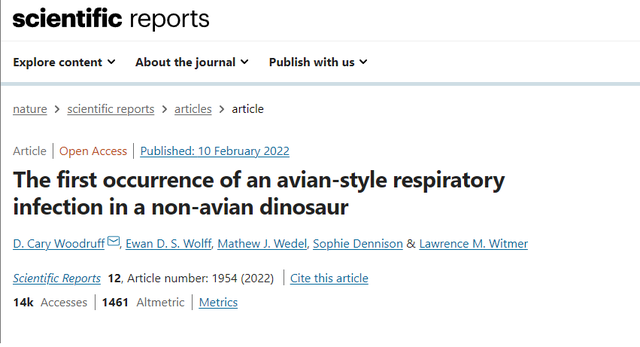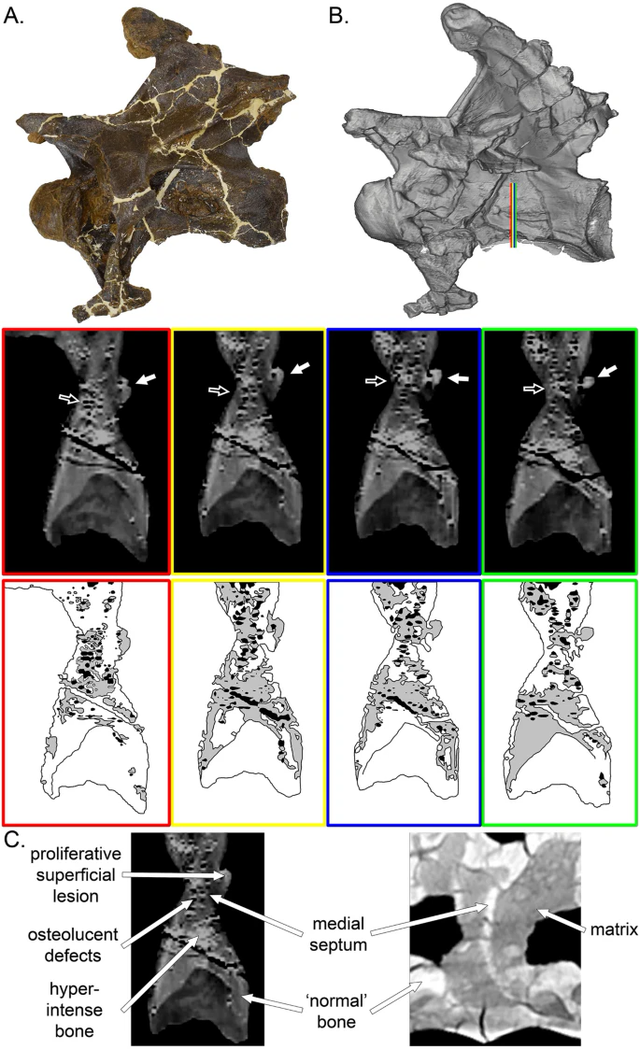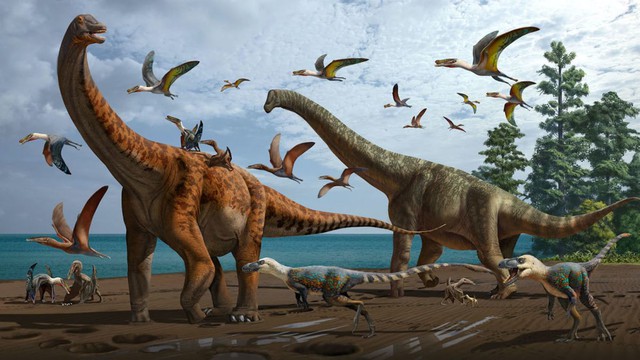New research shows that dinosaurs also get “colds”!
A research team recently published online an academic paper that reports their findings on the discovery of dinosaur fossils, and speculates that this dinosaur may have been had respiratory problems before he died, he may have had a cold, cough or other symptoms.

Scientists have recently discovered evidence of influenza and fungal infections in the fossils of a Jurassic dinosaur in the United States. The study was published in the journal Scientific Reports. At a time when the Jurassic period was still warm and humid, in the luxuriant area with diverse flora and fauna in what is now the southwestern part of Montana (USA), a long-necked dinosaur was in development. had the flu and had pneumonia-like symptoms such as fever, fatigue with poor breathing, coughing, sneezing, and even diarrhea.
Although colds and coughs are quite normal for us, when we learned that colds also attacked dinosaurs, many people were extremely curious, even funny.
The fossil samples studied by this team of paleontologists come from a dinosaur of the family Diplodocinae – a new, never-before-seen species of sauropod dinosaur (fossil number: MOR 7029), they are a large vegetarian dinosaur with a long neck, and they named this dinosaur Dolly.

The cervical vertebrae of MOR 7029 show obvious acoustic distortion (including shearing and crushing), but have structural abnormalities. In these vertebrae, the asymmetric alteration, morphology, position and texture of these structures highlights the pathological origin associated with the pneumatic fossil margins. Although very different, these structures have a multifocal nodular appearance causing a very undulating and heterogeneous surface. Bone proliferation varies in size and extent.
During the investigation, the team discovered that three bones in its neck had a deformity and several lumps. Based on the positions of the three bones, paleontologists speculate that the lumps formed after Dolly’s air sacs became infected and spread to the bones.
At the same time, in-depth analysis also speculated that the formation of these lumps could be due to a fungal infection called Aspergillus. These speculations are based on similar symptoms frequently observed in modern birds and reptiles. Aspergillus is a common respiratory disease that affects birds and reptiles, sometimes causing infection and deforming the bones of these animals, which can be fatal.

According to Cary Woodruff, Director of Paleontology at the Great Plains Dinosaur Museum in Malta, Montana, and lead author of the study, the animal died when it was 15-20 years old. Sauropod dinosaurs typically reached adulthood in their late 20s. Sauropods and carnivorous dinosaurs are known as theropods, a group that includes birds, possessing more complex respiratory tracts than mammals. In addition to the lungs, they also have thin, balloon-like air sacs that connect to the body cavity and many bones. In Dolly, bone growth was abnormal at the junction between respiratory tissue and bone in three vertebrae, evidence that the infection had spread from the lungs.
Interestingly, from a paleontological perspective, the first clear (albeit undiagnosed) scientific documentation of Aspergillosis was by Richard Owen in 1832 dissecting a flamingo. The disease often causes lesions throughout the respiratory system, similar to chlamydiosis, an infection of the eyes, brain, skin, and joints.
Aspergillosis in chickens has been reported to cause vertebral malformations. Aspergillus is an extremely common fungus, and especially thrives in warm, humid, and swampy environments. Although not transmitted from animals to humans, Aspergillosis is known in cats, dogs, horses, cows, and dolphins.
As in Chlamydiosis, Aspergillosis affects and usually causes non-purulent lesions over the entire respiratory and pneumatic tracts of birds, although atrophic rhinitis may occur.

It is speculated that Dolly may have suffered from this or a similar ancient fungal infection during her lifetime, as the fossil record shows that she suffered quite badly, to the point of deforming her bones. Although this is the first case of respiratory infection discovered in dinosaur fossils, it is not a shocking find, as previous fossil studies have also found that dinosaurs were still alive. tooth decay, cancer, arthritis…

Like humans, dinosaurs also got sick. But evidence of disease and infection found in fossils is scant. However, there is a lot of evidence to suggest that tyrannosaurs, such as the T-Rex, developed gout and that the iguanodons may have suffered from osteoarthritis. Cancer is much more difficult to diagnose, but now there is evidence that dinosaurs contracted them.
at Blogtuan.info – Source: genk.vn – Read the original article here


